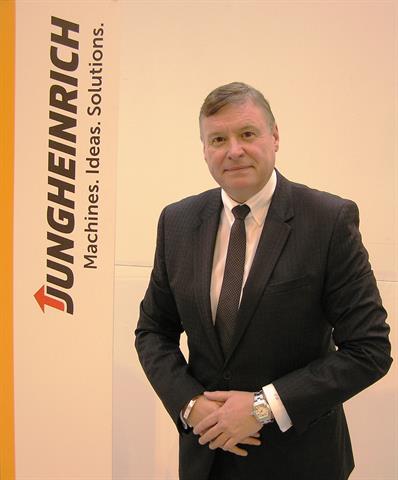 Steve Richmond |
Third-party logistics (3PL) service providers have traditionally been reluctant to invest in warehouse automation due to the large investment required and the apparent inflexibility of certain systems to adapt to the changing needs of customers.
However, Steve Richmond, director of Jungheinrich UK Ltd's Systems and Projects division, argues that this will change with recent advances in automation technology.
"In the past, a fully automated system could involve significant capital expenditure and require extended periods to secure return on investment. With many 3PL providers having to commit to relatively short-term contracts, the outlay on the type of fixed assets found in many fully automated systems - such as conveyors and stacker cranes - was often hard to justify," he says.
Richmond believes that recent developments have made automation scalable and flexible and, as a result, payback times are cut significantly, "which should encourage 3PLs to look again at the possibility of automating some of their intralogistics processes".
"For example, a standard operator-controlled Jungheinrich VNA truck can, with the introduction of transponder technology linked to a warehouse management system, operate 25% more productively because the truck is automatically directed to the next picking location in the most direct route possible. The operator doesn't have to think about where in the storage cube he or she has to go to next. It is all done automatically."
If the user's needs change, for example, a 24/7 operation be introduced, the same base machine can be converted to allow it to operate fully automatically, Richmond explains. "The manpower savings made by employing a fully automated VNA machine over a three-shift operation typically bring payback down to between 18 months and two-and-a-half years. Taking the costs of the truck operator out of any operation running three shifts makes a huge difference to a site's running costs."
He thinks it will become increasingly common for 3PLs to employ partial automation: hybrid systems that are part-automated and part-manual.
"In the past, some companies shied away from automation because they felt that a move to an automated system would mean that every aspect of the operation would have to be automated," he continues. "This is simply not the case. Automation no longer means that every aspect of the warehouse or distribution centre has to be automated - just the parts of it that will benefit most from automation."
He adds: "For instance, in many applications, a strong case can often be made for automating the 'bulk pallet' operation and then designing the 'picking operation' to be as flexible as possible. This is a model that we at Jungheinrich have developed over a number of years and it lends itself to the phased development of a facility, that can also take into account changes in customer demand and product profile."